3º ESO-HEALTH & SAFETY TECHNOLOGY
HEALTH AND SAFETY
INTRODUCTION
Workshops can be dangerous places. They are full of machines and tools that are designed to cut hard, rigid materials, and unfortunately every year people are injured in them through having accidents. Sometimes these accidents are just bad luck, but in most instances they are the result of people behaving wrongly, or not understanding how to do something correctly.
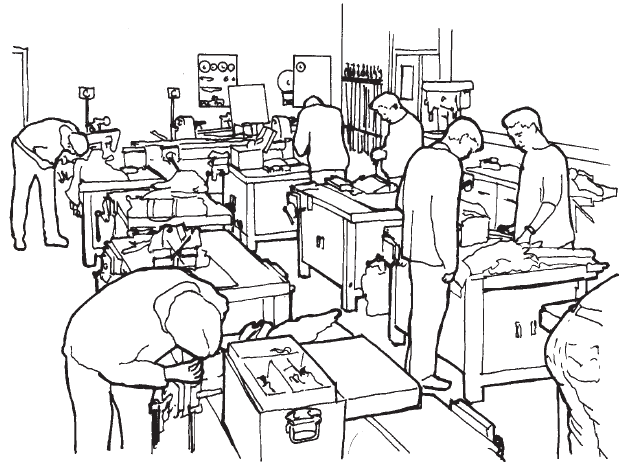
When you have read the health and safety rules you will realise that a lot of the principles of safety are just common sense. Unfortunately, some people need to have this common sense pointed out to them.
THE WORKSHOP AS AN ENVIRONMENT
A school workshop is not a classroom, it is a very special environment. All school workshops are different, but most of them contain the same kinds of equipment, working areas and storage for hand tools and materials. As there are similarities, some general rules can be made about keeping these environments safe.
Accidents happen when people are
• trying to do the wrong activity with a tool or machine.
• they are not paying regard to personal safety requirements.
• they are not concentrating.
PERSONAL PRESENTATION
Workshops are designed for practical activities, which mean making and manufacturing things. Because of the nature of this activity you will need to protect your clothing and yourselves from dust and swarf and sometimes oils and paints and the other materials that you need when you are engaged in technological activities.
SAFE PRACTICE IN THE USE OF MACHINE TOOLS
All machine tools are potentially dangerous, but unfortunately, even though some machine tools are large, powerful and seem frightening at first sight, some people seem to forget this very basic fact. Some machine tools, like a disc sanding machine, appear very simple to use. Because people think that they are simple they do not concentrate when they are using them, and a momentary loss of concentration can cause a serious accident.
Workshop Safety Rules
Before you can use equipment and machines or attempt practical work in a workshop you must understand basic safety rules. These rules will help keep you and others safe in the workshop.
S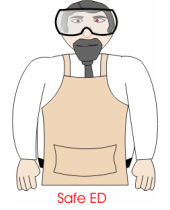
 afe Ed (left) always thinks about working safely. On the other hand, Ed the Handyman (right) never considers safety. Not only is he at risk of having an accident but so are those who work near him. They could have an accident because of his reckless behaviour.
afe Ed (left) always thinks about working safely. On the other hand, Ed the Handyman (right) never considers safety. Not only is he at risk of having an accident but so are those who work near him. They could have an accident because of his reckless behaviour.
Read the following workshop health and safety rules carefully. If you fully understand them you should be able to work safely in a workshop. Do not be like Ed the Handyman !!!!
PERSONAL SAFETY
• Workshops should be kept clean and tidy.
• School bags should be put in one corner of the workshop as soon as you enter it. They should not be kept around benches where they can be fallen over.
• Scrap offcuts of material should be picked up and put into scrap bins.
• During practical sessions keep the main workshop floor area free from stools.
• Do not try to do practical, making activities sitting down. You are making it harder for yourself.
•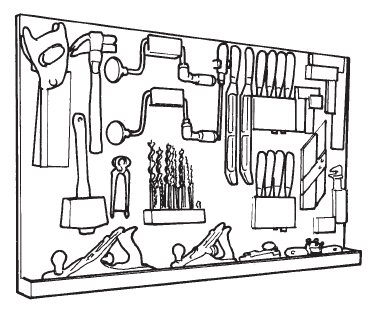 Never blow dust away from the work area, use a hand brush to sweep it onto the floor.
Never blow dust away from the work area, use a hand brush to sweep it onto the floor.
• Keep the area you are working in clear of excess tools and materials.
• Put materials away once you have taken what you need.
• Put tools back in their racks or cupboards once you have used them. It is selfish to hang on to a lot of tools that other people may need.
•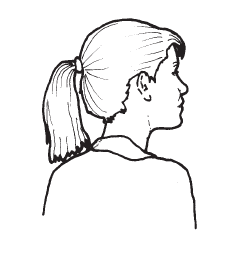 Always carry tools, especially edged tools, for example chisels and saws, with their cutting edges pointing downwards.
Always carry tools, especially edged tools, for example chisels and saws, with their cutting edges pointing downwards.
• When carrying materials that are large or long, for example sheet plastics or lengths of wood, be very aware of the other people around you.
•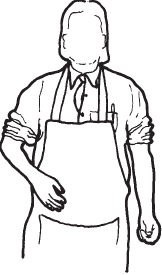 Never run in a workshop. There is no need to and it is very dangerous.
Never run in a workshop. There is no need to and it is very dangerous.
• You should at all times wear adequate protective clothing, for example an apron.
• You must wear safety glasses, goggles and when necessary a full face shield when using machine tools or carrying out hazardous operations.
•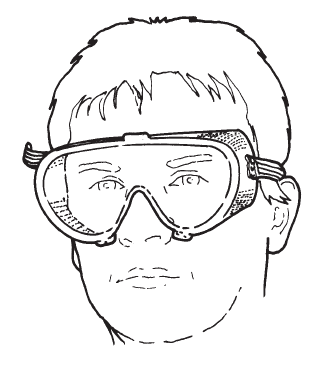 School clothing should be tucked in underneath an apron and shirt sleeves and the sleeves of pullovers should be rolled up.
School clothing should be tucked in underneath an apron and shirt sleeves and the sleeves of pullovers should be rolled up.
• Loose ties should be tucked into shirts and scarves should never be worn in a workshop.
• It is dangerous to wear loose jewellery in a workshop. Take it off and give it to your teacher to look after until the end of the lesson.
SAFE PRACTICE IN THE USE OF MACHINE TOOLS
• You have got to concentrate on what you are doing when you are using machine tools.
• Only use a machine tool after you have been taught how to use it, and when you have been given permission to use it by a member of staff.
• You need an understanding of the design of the machine and what the appropriate use for the machine is.
• You have to understand how to set up a machine correctly, i.e. how to hold the cutting tool and the workpiece.
• You need an understanding of the correct speed that the machine should run at with regard to the work undertaken and the material being cut.
• You need to be aware of some of the other hazards arising from dust and swarf when using machines.
• You need to keep the machine and the surrounding area clean and tidy.
• Do not get too close to a person using a machine. Give them room, and remember only one person can use a machine at any one time.
• Never touch the moving parts of a machine.
• When you use a machine you need an understanding of personal safety and the safety of others in the working environment.
• When learning how to use a machine, listen very carefully to all the instructions given by the teacher. Ask questions, especially if you do not fully understand.
• Do not use a machine if you have not been shown how to operate it safely by the teacher.
• Keep hands away from moving/rotating machinery.
• Report any damage to machines/equipment as this could cause an accident.
• If you are not certain that what you are doing is safe, ask.

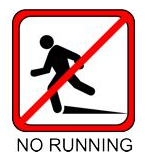
HEALTH & SAFETY ACTIVITIES
Safety in the workshop must be taken very seriously by all. Your teacher will have taught you how to use a range of machines. He / she will have ensured that you know all about using machines safely as well as being able to use then to cut and shape materials.
1.) Test: The test below is aimed at testing your understanding of basic safety in the workshop. You should be able to answer all the questions. Many of the questions can be answered by using your commonsense as well as what you have been taught.
Working in pairs, read each of the questions carefully and write your answers in full sentences. After the test, you will go through the correct answers with the rest of the students
| 1. Why is it important to use machines only after instruction/demonstration by the teacher? |
| |
| |
| |
| |
| 2. Why is it important to wear goggles when using machines? |
| |
| |
| |
| |
| 3. Why should you wear an apron when carrying out practical work? |
| |
| |
| |
| |
| 4. Why should you put tools back in their racks or cupboards once you have used them? |
| |
|
|
| |
| |
| |
| 5. Why is it important not to run in a workshop? |
| |
| |
|
|
| |
| |
| 6. Why should you keep the workshop clean and tidy? |
| |
| |
| |
| |
| 7. When queuing up for a machine why is it important not to distract the person using it? |
| |
| |
| |
| |
| 8. Why is it important to stop and listen to the teacher when asked to do so? |
| |
| |
| |
| |
| 9. Why are ties a potential danger, especially when using a machine? |
| |
| |
| |
| |
| 10. If a pupil has long hair what should he/she do when using a machine? |
| |
| |
| |
| |
| 11. Why is it important to report damaged/defective tools and equipment to the teacher? |
| |
| |
| |
| |
| 12. Why is it important not to get too close to a person using a machine? |
| |
| |
| |
| |
| 13. What do these symbols mean ? Why is it important to follow their advice ? |
| |
|  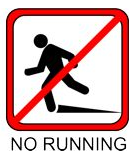 |
|
|
|
|
|
|
| |
2.) Design of a Safety Poster.
Working in pairs, design a Safety Poster that could be displayed in a workshop. It must clearly encourage all students to follow the rules. The poster should be drawn accurately and include colour and shade.
Two examples are shown below. They both have symbols for the corners and a simple border. The title "Safety in the Workshop" appears prominently in both. Other drawings have been added as well as colour and shade. The message is simple and easy to understand - SAFETY.




10








 afe Ed (left) always thinks about working safely. On the other hand, Ed the Handyman (right) never considers safety. Not only is he at risk of having an accident but so are those who work near him. They could have an accident because of his reckless behaviour.
afe Ed (left) always thinks about working safely. On the other hand, Ed the Handyman (right) never considers safety. Not only is he at risk of having an accident but so are those who work near him. They could have an accident because of his reckless behaviour. Never blow dust away from the work area, use a hand brush to sweep it onto the floor.
Never blow dust away from the work area, use a hand brush to sweep it onto the floor. Always carry tools, especially edged tools, for example chisels and saws, with their cutting edges pointing downwards.
Always carry tools, especially edged tools, for example chisels and saws, with their cutting edges pointing downwards. Never run in a workshop. There is no need to and it is very dangerous.
Never run in a workshop. There is no need to and it is very dangerous. School clothing should be tucked in underneath an apron and shirt sleeves and the sleeves of pullovers should be rolled up.
School clothing should be tucked in underneath an apron and shirt sleeves and the sleeves of pullovers should be rolled up.
















